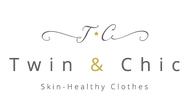Welcome to Twin&Chic Sustainability Journal one more Thursday!
In this third installment of our Sustainability Journal our "Guest Editor" will talk to us about the role of the university in the circular economy.
SILVIA PEREZ BOU

Academic Director The Right Fashion. ISEM Fashion Business School.
University of Navarra.
Silvia is currently a professor in the Design Degree at the School of Architecture and in the different ISEM Fashion Business School programs (FBA, Right Fashion and Fashion and Creativity Management). Its main areas of interest are sustainability and circularity, related to both design and fashion, thinking about engaging students and professionals in co-responsible production and consumption. He has also worked on these aspects in urban planning and architecture.
–
We hope you enjoy our third post.
Thank you for being part of the change, together we work for a better future.
#futureisforourchildren
The Action Plan for the Circular Economy in Europe It foresees the creation of 700,000 jobs linked to the circular economy in the coming years [1] . The textile sector is one of the seven key value chains identified to begin this transition, along with electronic devices and ICT, batteries and cars, packaging, construction, plastic and food, water and nutrients.
The Spanish Circular Economy Strategy also assigns a priority place to the textile and clothing sector. It is a dynamic sector that contributes with a 2.9% to GDP and 4.1% of total employment in Spain in 2016, with 10,556 companies with employees in 2016 [2] .
Undoubtedly, although some large listed companies are champions of the fashion-Spain brand at an international level, the 98.25% of this industry responds in our country to microenterprise and SME models.
Joint action by large and small is needed to achieve the transformation to a circular model. And, above all, the sensitivity and participation of consumers is needed in this new model that, based on the upcoming regulations planned by the European Union, will soon cease to be an option and become normality.
And how will we make that transformation? With knowledge and research.
For such an important issue, commercial slogans or easy solutions do not work. This challenge involves a lot investment (from machinery to make new fabrics from recycled materials, to development of new materials), many creativity (from ecodesign to business models based on repair, extension of use, rental, etc.), and coordinate all members of the value chain , to work in the five fields of action of the circular economy: take, manufacture, distribute, use, recover.
This represents a new approach to traditional activities at different levels: from the most technical to the most strategic. To achieve this, it is necessary training . And training combined with research that helps go further. The university , as that neutral agent that seeks knowledge based on truth, is in contact with industry and companies, investigates and puts its findings at the service of society, it is one of the key institutions in this transition .
[1] European Commission. Circular Economy Action Plan. For a cleaner and more competitive Europe. 2020, p.4.
[2] Circular Spain 2030. Spanish Circular Economy Strategy. Madrid, 2020. p. 36










Leave a comment